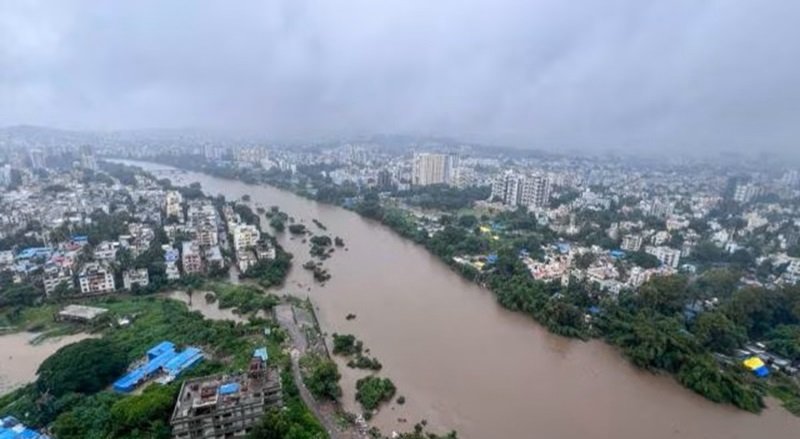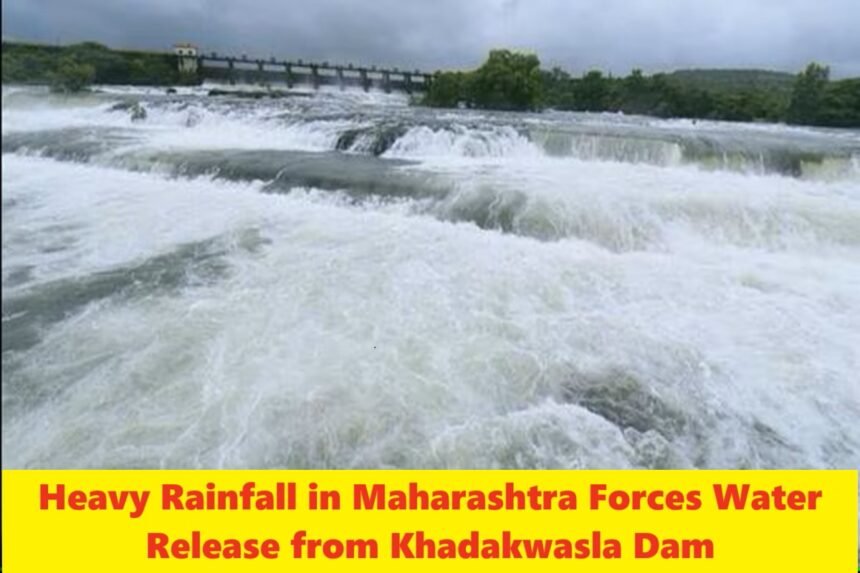Heavy Rainfall in Maharashtra Forces Water Release from Khadakwasla Dam, Waterlogging in Mumbai
Khadakwasla Dam: The monsoon season has brought a deluge of rain to Maharashtra, and with it, a fresh wave of challenges for the region. The heavy downpours have caused significant waterlogging in Mumbai and its suburbs, while in Pune, the continuous rain has forced the authorities to release water from the Khadakwasla Dam for the first time this monsoon season. Let’s take a closer look at the situation.
Mumbai: Battling Waterlogging
The torrential rains have once again put Mumbai on high alert. Several low-lying areas in the city and its suburbs are grappling with severe waterlogging. The city’s drainage systems, often overwhelmed during heavy rainfall, are struggling to keep up with the persistent downpour, causing significant inconvenience to the residents.
Impact on Daily Life
The waterlogged streets have disrupted daily life, making commuting a nightmare for many. Roads have turned into rivers, and public transport services have been heavily affected. Schools and offices have either closed or are operating with minimal attendance as people choose to stay indoors.
Pune: Khadakwasla Dam Water Release
In Pune, the situation is equally challenging but for different reasons. The Khadakwasla Dam, a crucial water source for the city, has reached 95% capacity, prompting the irrigation department to release water into the Mutha River. This marks the first time this monsoon season that such a significant amount of water has been discharged.
Rising Water Levels
On July 23, the water level at Khadakwasla was recorded at 88.52% by 5 PM. By midnight, it had surged to 95%, necessitating immediate action. The irrigation department began discharging water at 10,000 cusecs from 7:30 AM on July 24. This led to a swollen Mutha River, prompting warnings to residents in low-lying areas of Pune to stay alert.
Managing the Inflow
The continuous heavy rainfall in the ghat and catchment areas of the dam has significantly increased the inflow. As a result, the water release capacity from Khadakwasla was adjusted throughout the day. By 5 PM, the discharge rate was brought down to 7,276 cusecs after the reduction in inflow, but it spiked again to 11,556 cusecs by 11:30 PM.
Public Safety Measures
The local disaster management cell has been proactive in warning and preparing the public for potential flooding. Residents living near the river have been advised to stay vigilant and avoid venturing close to the riverbanks. Both police and local administration have been managing the situation, ensuring that curious onlookers do not inadvertently put themselves at risk.
Catchment Areas and Dam Levels
The heavy rains have not just impacted Khadakwasla but have also led to rising water levels in other dams in the region. The collective water level in the Khadakwasla dam cluster was recorded at 63.56% with 18.53 TMC as of July 24.
In Bhama Askhed and Pawana, the water levels were recorded at 41.47% and 48.60%, respectively.
Constant Monitoring
The irrigation department is keeping a close eye on rainfall activity and water levels across all dams.
Decisions regarding water release and other necessary actions are being taken based on real-time data and standard procedures to ensure public safety and adequate water management.
Conclusion
The heavy rainfall in Maharashtra has once again highlighted the challenges posed by the monsoon season.
Mumbai is battling severe waterlogging, disrupting daily life and services.
Meanwhile, in Pune, the Khadakwasla Dam‘s water release is a reminder of the delicate balance between managing water resources and ensuring public safety.
As the rains continue, the authorities are working tirelessly to mitigate the impact and protect the residents.
Read More: India at the Paris Olympic Games 2024: A Deep Dive into the Contingent
FAQs
1. Why was water release from the Khadakwasla Dam?
The Khadakwasla Dam reached 95% capacity due to continuous heavy rainfall,
necessitating the release of water to prevent overflow and manage the dam’s levels.
2. How has the water release affected Pune?
The water release has caused the Mutha River to swell,
prompting warnings to residents in low-lying areas to stay alert and avoid the riverbanks.
3. What measures are take in Mumbai to manage waterlogging?
Authorities in Mumbai are working to clear waterlogged areas,
improve drainage, and provide warnings to residents.
Public transport services are also adjust to ensure safety.
4. What is the current status of other dams in the region?
As of July 24, the collective water level in the Khadakwasla dam cluster was 63.56%,
with Bhama Askhed and Pawana dams at 41.47% and 48.60%, respectively.
5. How is the irrigation department managing the situation?
The irrigation department is constantly monitoring rainfall activity and dam levels,
making real-time decisions to manage water releases and ensure public safety.









